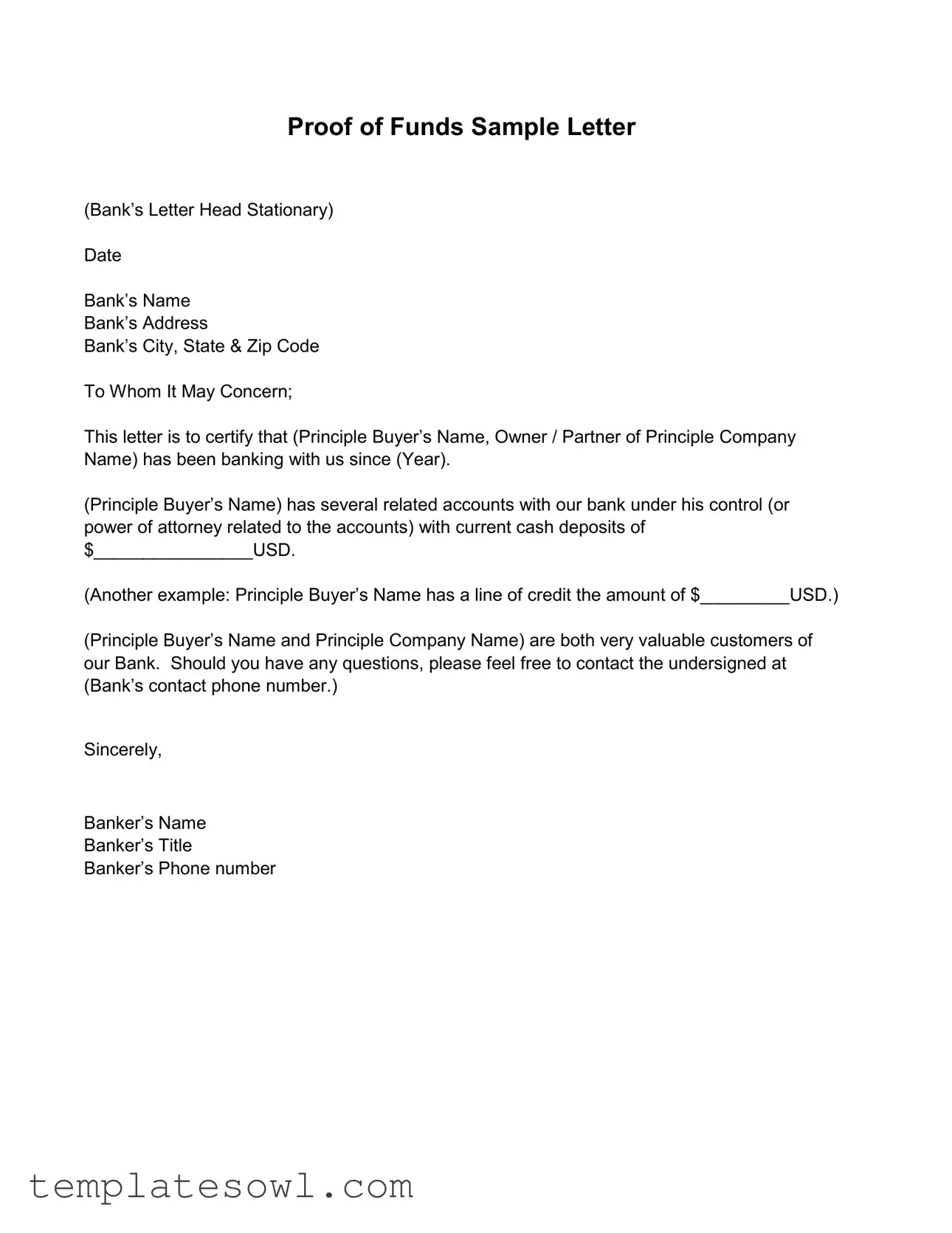What is a Proof of Funds Letter?
A Proof of Funds Letter is a document issued by a financial institution that verifies an individual’s or business’s financial ability to complete a transaction. It typically outlines the cash deposits or available lines of credit held by the individual or entity, and serves as assurance to third parties that the necessary funds are available for a specific purpose, such as a real estate purchase or business investment.
Who typically issues a Proof of Funds Letter?
The letter is usually issued by banks or financial institutions where the individual or business maintains accounts. Bank representatives, such as personal bankers or managers, usually prepare the letter on official bank letterhead, ensuring authenticity and validity.
What information should be included in a Proof of Funds Letter?
A comprehensive Proof of Funds Letter should include the following details: the date of issuance, the bank’s name and address, the name of the account holder or entity, the duration of the banking relationship, the current available cash deposits, any specific lines of credit, and a statement regarding the customer’s status as a valuable client of the bank. Contact information for the bank representative should also be provided for any follow-up inquiries.
How is the Proof of Funds Letter used?
This letter is primarily used in transactions requiring financial verification. Real estate agents, property sellers, and lenders often request the letter as part of the negotiation or approval process. It provides assurance that the buyer has the financial means to complete the purchase.
Is a Proof of Funds Letter the same as a bank statement?
No, a Proof of Funds Letter is not the same as a bank statement. A bank statement provides detailed account activity over a specific period, while a Proof of Funds Letter is a summary document certifying the availability of funds at the time of issuance. The latter is specifically intended for verifying financial capability for a transaction.
Can a Proof of Funds Letter expire?
Yes, a Proof of Funds Letter can have an implicit expiration based on the nature of the transaction. While the letter itself may not have a specified expiration date, its relevance diminishes as time passes, especially if the transaction involves large sums of money or if market conditions change. It is advisable to obtain a new letter if significant time has elapsed.
How can one obtain a Proof of Funds Letter?
Individuals or businesses should contact their bank to request a Proof of Funds Letter. This process may involve verifying identification and providing information about the accounts in question. It may be helpful to inform the bank of the intended use of the letter to ensure that all necessary details are included in the document.
